Many would agree that teaching English pronunciation to young learners can be a challenging task, especially for those whose native language is quite different from English. Luckily, there are several different ways to tackle this problem.
- A common suggestion is working with phonics. However, as phonics deals with visual representation of words (letters) it is not considered suitable for little beginners (ESL learners in their first two years of learning English), who need to be exposed to the language first. After they develop a habit of understanding the language they hear, decoding its meaning and thus master the pronunciation, phonics can be introduced. The relationships between letters and visual representation of various written forms of sounds can help build a strong foundation for literacy skills.
- Developing receptive skills of listening is a crucial aspect of language learning, and it enables children to imitate new, interesting and unusual sounds in meaningful contexts.
- Activities focused on repetition help children practice their pronunciation and reinforce the sounds and rhythm of English (phonetic awareness). Children begin to cultivate these skills around the age of three or four in their mother tongue but it is a lengthy process. Therefore, it is absolutely essential to respect the children’s need for getting ready to analyse and define sounds in a foreign language.
Do first languages matter?
Learners can identify particular sounds in words; first vowels, then voiced and unvoiced consonants. Understanding the distinction between voiced and unvoiced consonants is crucial for achieving accurate English pronunciation as it can affect the meaning of words. While vowels are the most important building blocks of pronunciation. They form the core of every word, and they are essential for understanding and communicating meaning, as well as providing a foundation for consonants. Once learners have mastered vowel sounds, they can begin to learn how consonants interact with vowels to form syllables and words.
How many vowels are there in your language? In Czech, my mother tongue, there are 14 vowel sounds, two of which are not used in English; whereas in English, there are 20 vowel sounds, some of them very different from Czech. How can the children recognise the differences between particular sounds; and how can they decide which sound they should produce?
Here are a few tips and tricks to help you deliver effective pronunciation practice in your primary lessons:
Trick No.1 Sound discrimination
With a set of pictures, learners try to produce the vowel sound as precisely as possible. We can use various games for it, such as the following board game where children name the pictures they land on and try to produce the sound as precisely as they can.
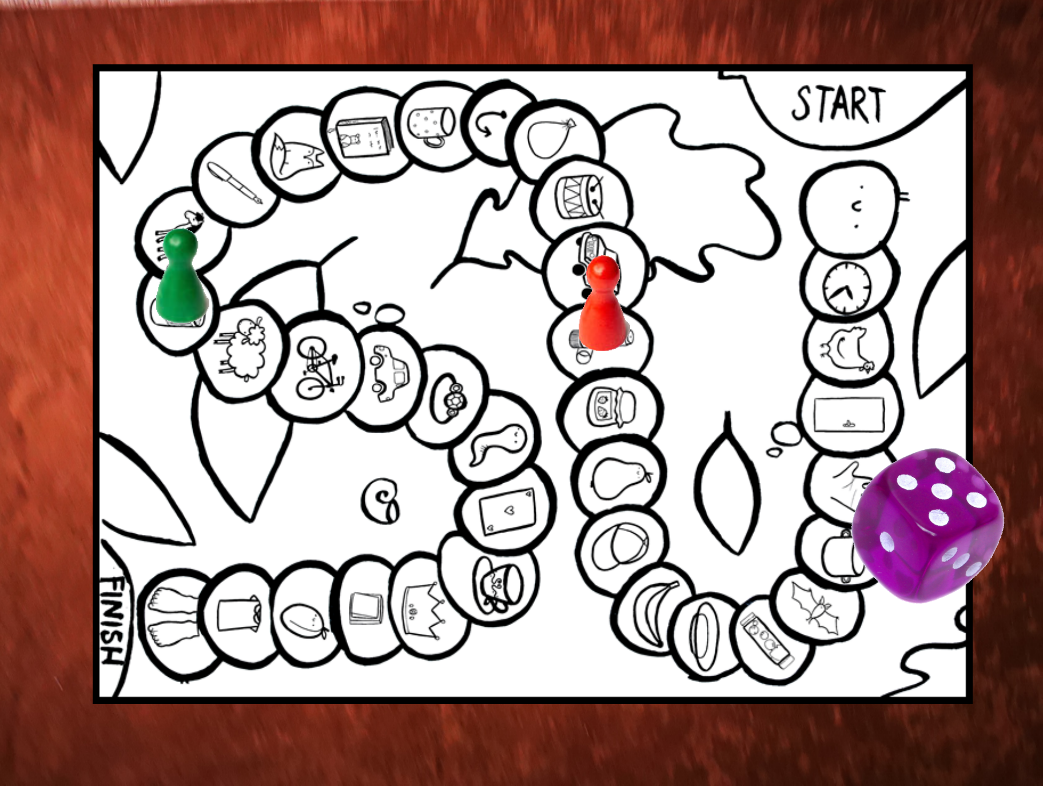
Trick No. 2 Pronunciation exercises
To recognise the sounds and to imitate them properly, children need to know how to produce them. I solve this problem with so-called pronunciation exercises. Here are some of them.
ə We play a monkey: Uh, uh, uh, uh!
ɜ: Long ə: the monkey is confused
ʌ Push the corners of your mouth far apart and say ʌ
æ You are a skeleton with a rotten jaw-bone – it drops down when you open your mouth: Mango – you greedy monkey, you eat that entire huge MANGO in one gulp!
əʊ We start drawing a large circle with our arms, down backwards, and back along head
Trick No. 3 Phonetic transcription
Some teachers refuse to teach phonetic transcription claiming that it is very difficult for young learners. However, my own experience, as well as the experience of my colleagues, has taught me that little symbols for each sound can help children to identify which sound they are dealing with. Learners can play with sounds and their visual representation comes as an unconscious complement.
They search for words containing the sounds, match the words with the same sound, compare and contrast similar words. The phonetic symbols help them gather the words with same sounds into one group.
Top tip: I use small paper baskets and a set of picture cards. Children love collecting the pictures into their baskets, and then they show one another what they have ‘bought’.
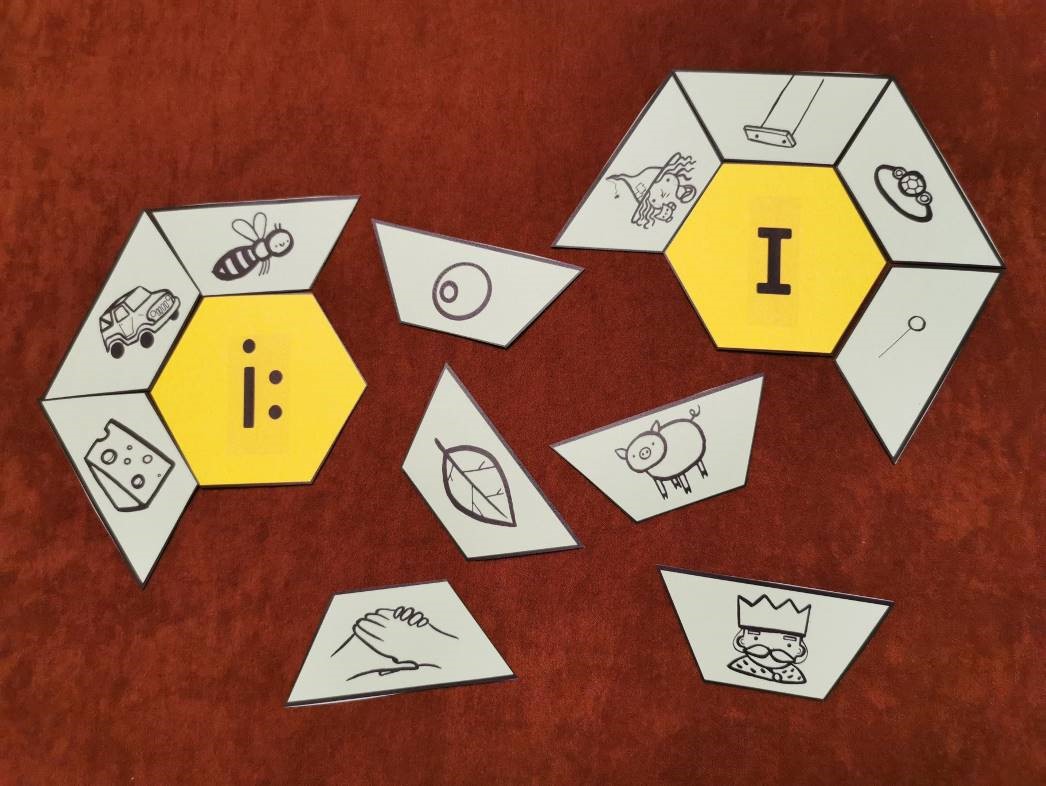
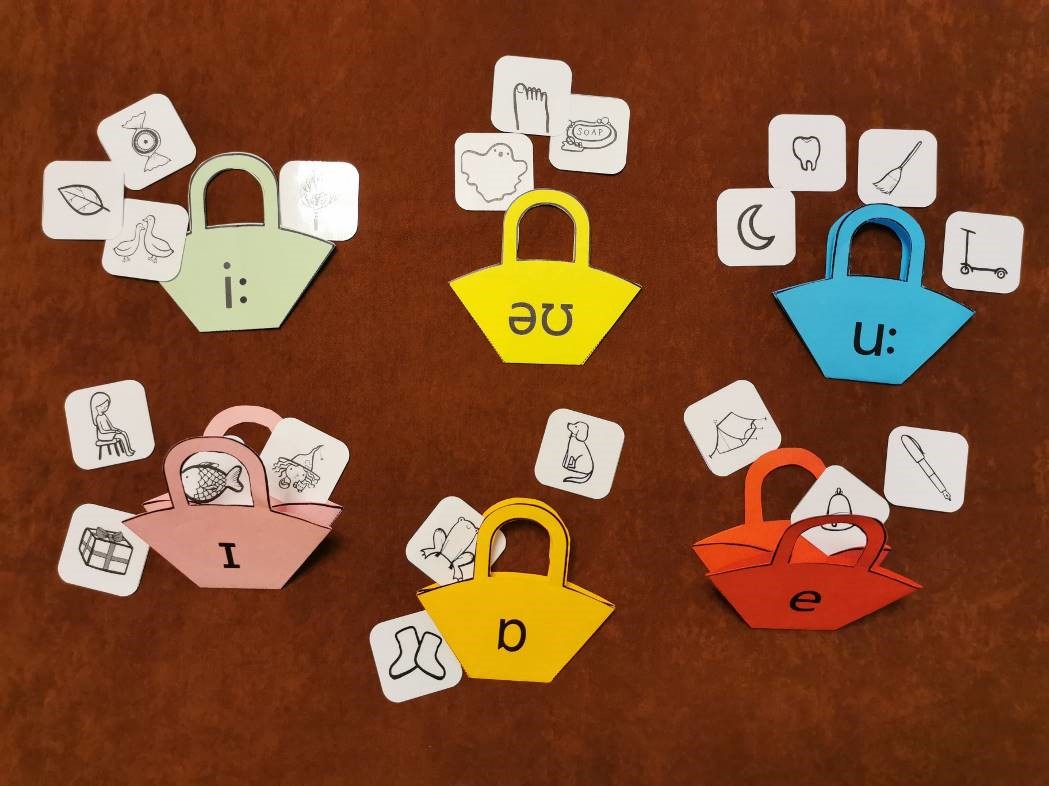
Trick No. 4 Games
Incorporating pronunciation games and fun activities makes learning English pronunciation more engaging and enjoyable for EFL children. It’s important to note that these approaches should be tailored to the specific needs and level of each child, and the teacher should provide a supportive environment and profound activities to help the children improve their pronunciation. Even simple things such as a set of dominoes, bingo, or activities with cloth pegs make learning enjoyable and challenging.
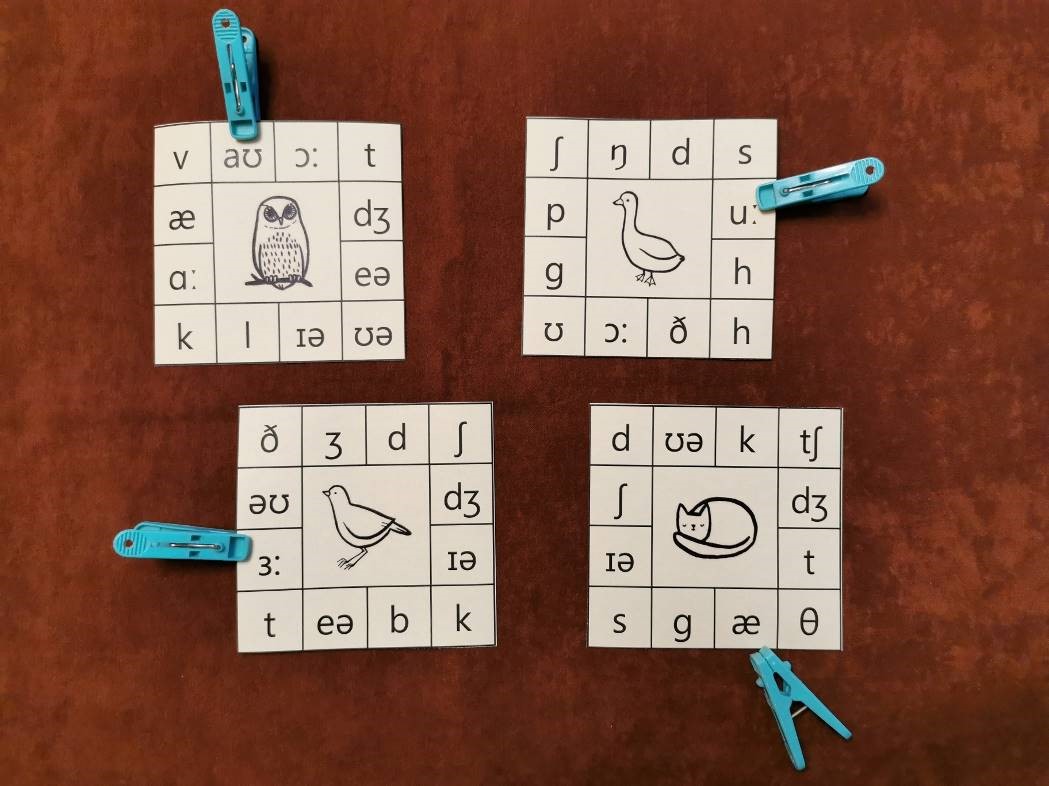
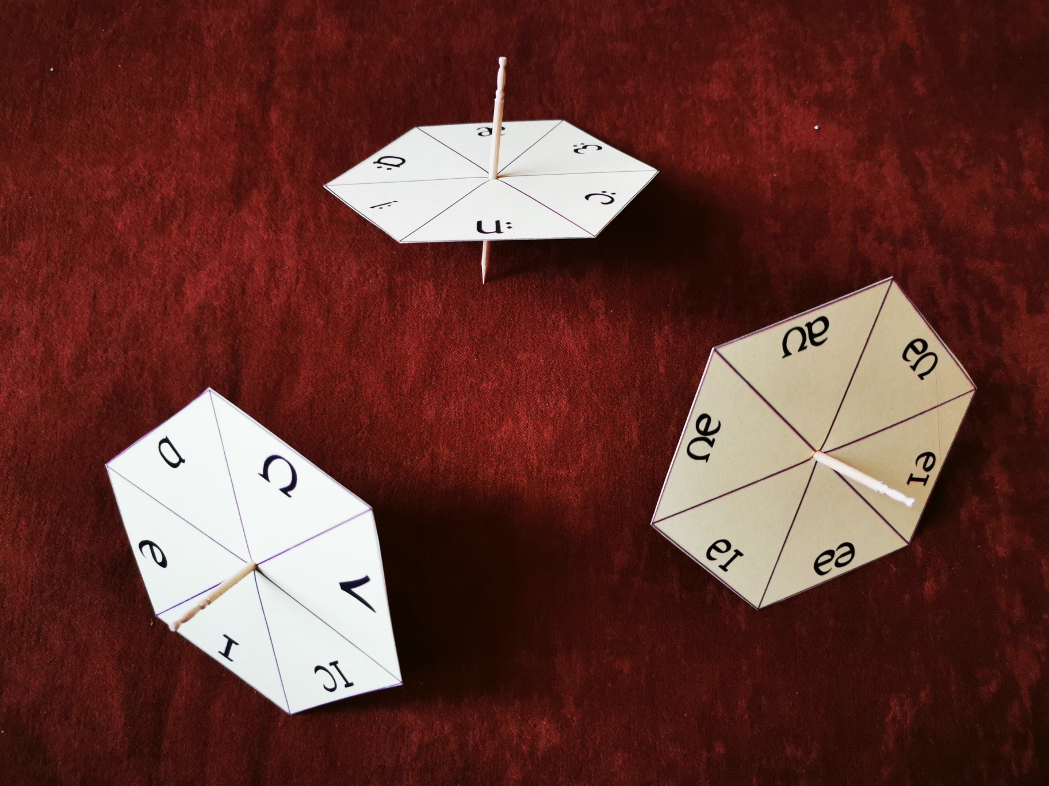
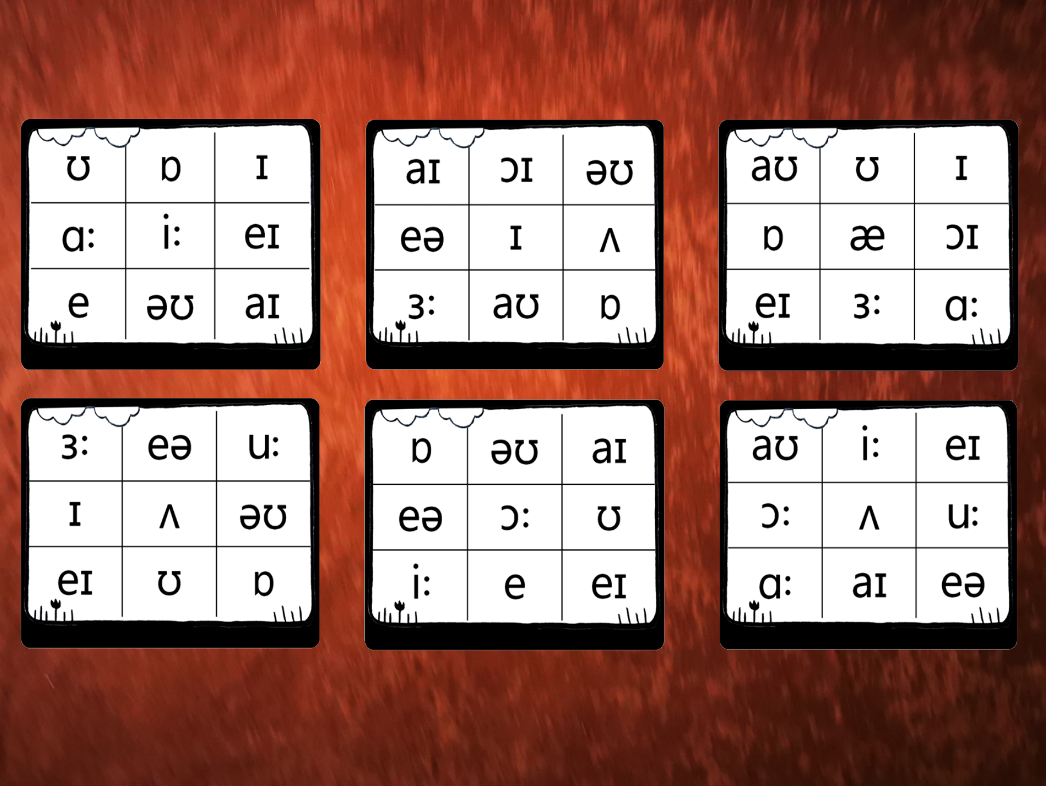
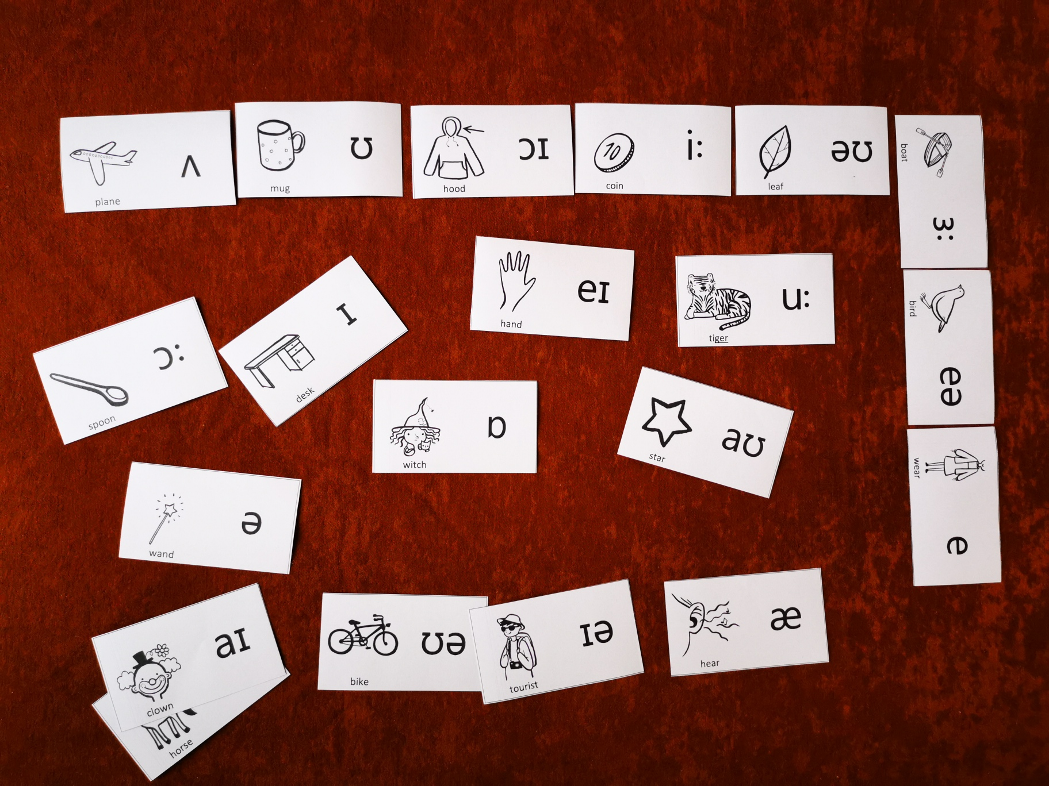
Trick No. 5 Word hunts
Hunting for words that meet specific criteria can be lots of fun for young learners. They love searching for words they comply with certain requirements, especially if the final layout has an attractive format. We can select the sounds we wish to practice with the learners. They can work either individually or in groups, brainstorming words that contain these sounds and recording them in specific formats. This can include the owl worksheets with the symbol of a particular vowel, or accordion strips that can later be attached to a piece of paper with a head, as a way to make the activity more engaging. These language-based exercises can have a positive impact on children’s language development, particularly in the areas of phonological awareness, vocabulary acquisition, social skills, and motivation.
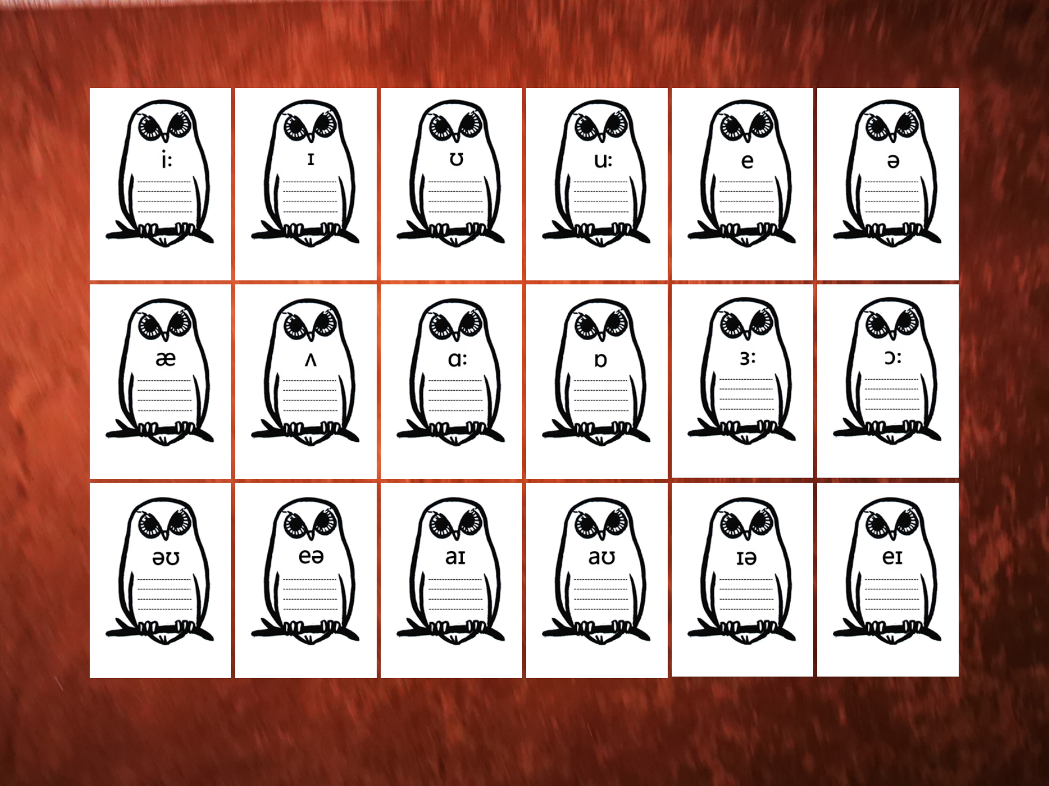
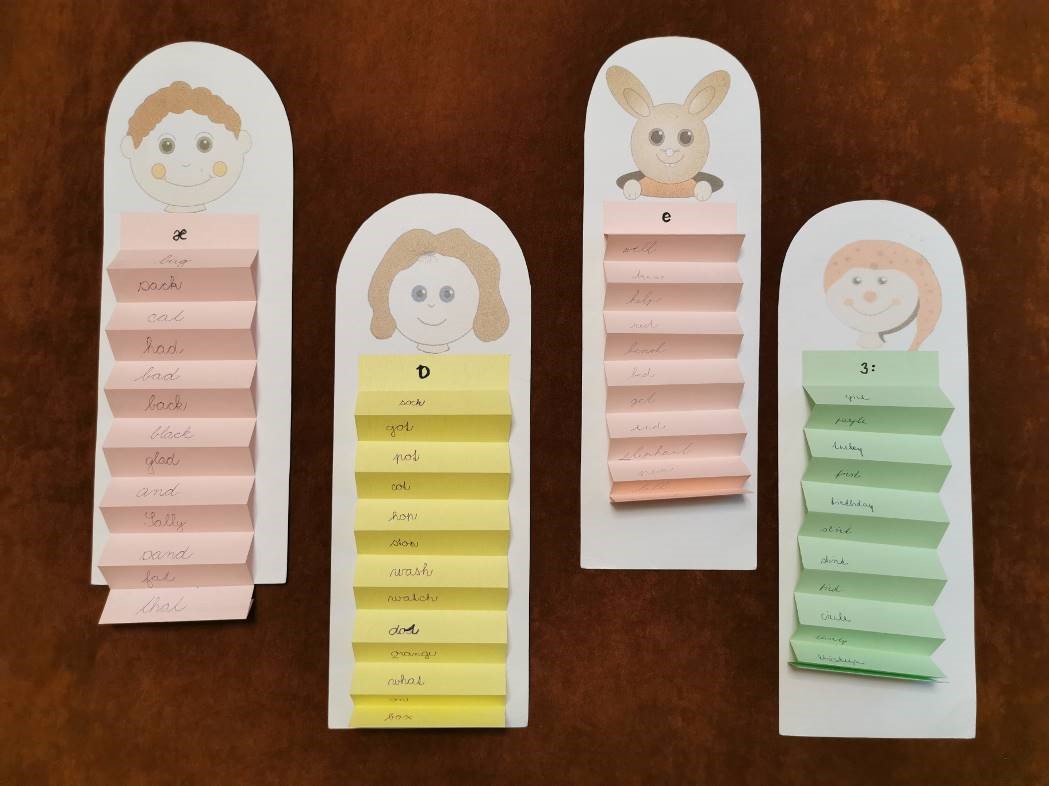
Trick No. 6 Contrasting sounds
It’s beneficial to let the learners consider the similarities and differences between sounds. They can focus on words containing / ʌ / and / æ / or / i:/ and /ɪ/ in the funny game with flies and fly swatters. Two players hold fly swatters and a couple of fly mats with names, containing these contrasting sounds. I started saying words containing these sounds, and then asked the rest of the children to offer more words. Everybody was involved!
We often use paper mittens with phonetic symbols printed on two sheets of paper and laminated together to create a mitten that can be put on one’s hands. Each child has two mittens, one on each hand. I say words with one of the sounds and they have to raise the mitten with particular sound over their heads. Fun, fun, fun!
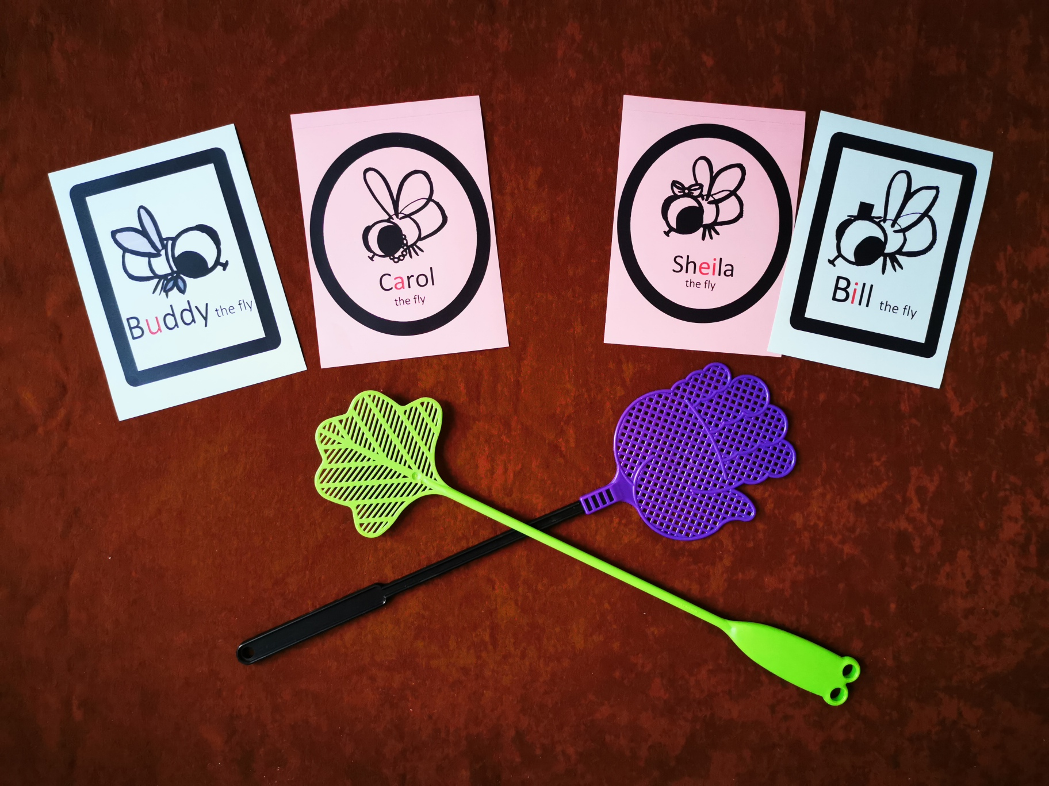

Trick No. 7 Chants
It is widely known that the repetitive nature of chants helps to enhance memory retention, making it easier for learners to remember vocabulary and grammar structures. Chants provide a low-pressure and fun way for learners to practice speaking skills, which can help boost their confidence and reduce anxiety.
Chants can be used in group settings, encouraging participation and collaboration among learners, which can create a sense of community and support. Chants help learners improve their pronunciation and intonation, as they focus on repeating and chanting words and phrases in a rhythmic and musical way.
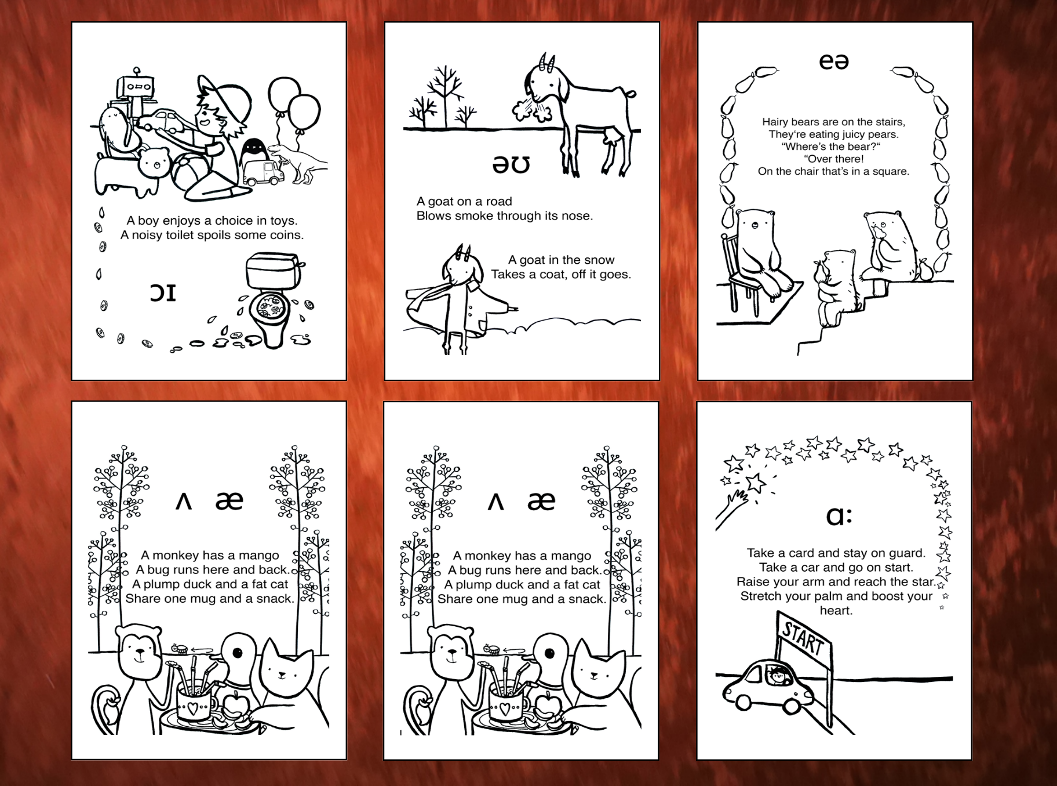
Trick No. 8 Stories
Stories are a real treasure in language learning; children live through the situations described in the story, they immerse themselves in it and are more willing to participate.
Here is a story that I used with children to help them learn unusual English sounds in an amusing way. The story can be extended into more lessons, broadening the practice and expanding the range of sounds. Enjoy!

Conclusion
In general, teaching English pronunciation to young learners can be challenging, but with the right teaching approach, patience, persistence, and a bit of creativity it is possible to help them improve their English pronunciation over time.
With the help of pronunciation-focused activities my learners have achieved greater accuracy in their pronunciation, showed better understanding of the meanings of English words as well as were better able to recall them when needed. These activities enhanced their listening skills by helping them distinguish between different sounds in spoken English. They significantly improved their reading and writing skills, particularly their spelling, as it helped them understand the patterns behind English spelling rules. By working in groups in some activities, children also improved their social skills, such as communication, collaboration, and problem-solving. These skills are essential for success in school as well as later in life.
Resources
All activities introduced here, including all photos, were taken from Sylvie’s teaching resource pack for teachers, “Pronunciation Basket” published by AMATE, z.s. in 2018. It includes about 600 of similar activities (www.sylviad.cz).
Other resources:
Teaching English Pronunciation: The Importance of Vowels by Tracey M. Derwing and Murray J. Munro (TESL Canada Journal, 2015).
The Phonology of English as an International Language: New Models, New Norms, New Goals by Jennifer Jenkins (Oxford University Press, 2014).



Thanks for the article. I like the activities – I’m always a bit wary of using phonetic symbols with any learner though, especially young learners